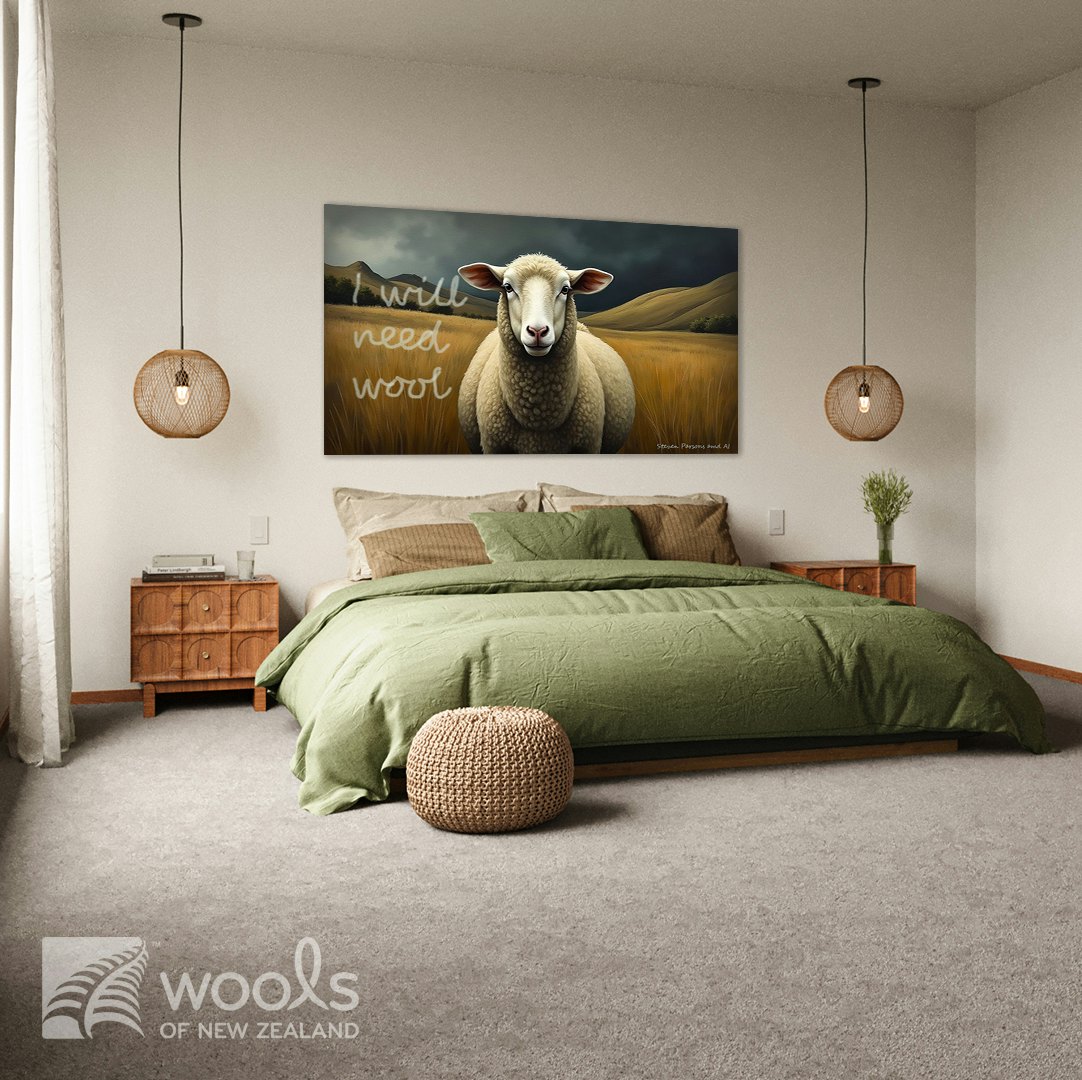Wool Industry Update

Over the past few weeks there continues to be a lot of commentary about the strong wool sector, particularly following the decision by the Ministry of Education to award a rural school’s contract to a North American synthetic carpet manufacturer.
Obviously, Wools of New Zealand is disappointed our own wool tile bid for this programme was unsuccessful. Nevertheless, we’ve been heartened by the support from New Zealanders for our growers, the wool product and the sector over the past few weeks.
Recently, a Canterbury farmer launched a petition urging the Government to use wool carpet in all of its buildings, and we encourage you to sign it.
Current Wool Market
We acknowledge that the current strong wool price isn’t where we want it to be. That’s frustrating for strong wool growers and Wools of New Zealand. The situation is compounded by the softening global markets for beef and lamb and the impact of the Napier wool scour being out of action due to Cyclone Gabrielle.
WNZ Strategy
Despite these challenges, we remain confident that our strategy is the right one to reverse the fortunes of the strong wool sector.
When we embarked on our blueprint to turn around the strong wool market, we quickly identified that carpet accounted for 53% of the strong wool clip. This meant that entering the carpet market and creating an affordable range of quality wool carpets would be the fastest way we could influence the demand for strong wool and help consume some of the excess wool produced.
Taking control of the value chain and moving our grower shareholders from essentially commodity traders and price takers to brand owners and price makers was crucial.
We are now selling branded woollen carpet through 150 retailers, and we are about to launch a commercial wool tile range.
The journey hasn’t been easy and we have certainly had our challenges on a number of fronts, however we’ve learned valuable lessons along the way. Over the past 30 years, the international supply chain for strong wool products has been losing momentum, with synthetic carpet dominating the market. However, we are seeing a positive shift towards natural woollen products due to increased consumer awareness and preference for ethical and sustainable options.
Global Wool Carpet Manufacturing Capacity
One major obstacle to overcome has been manufacturing capacity. Many strong wool manufacturers have switched to synthetic fibres due to falling consumer demand. Over time, they have decommissioned the plants required to spin yarns, thus limiting the production of strong wool products. So, while consumers are showing a desire to buy wool carpet, investment is required to reestablish production capacity and capability and that includes the training of staff to run those facilities. This has been challenging and is one of the big issues Wools of New Zealand has had to deal with to establish its business in New Zealand.
It is essential that we support this investment, we need to continue our focus on promoting strong wool products with strong branding and effective marketing campaigns, and at the same time, broaden the markets we operate in, so that more wool is consumed.
This includes building consumer confidence in the environmental benefits of woollen products, an area the man-made fibre marketers have excelled at.
Environmental Credentials
Environmental Product Declarations (EPDs) and Life Cycle Assessments (LCAs) are increasingly sought after in procurement tenders, and we are actively working on one for our wool carpet tiles.
Summary
While the journey to a stronger strong wool sector may take time, we are optimistic about the future.
Manufacturers need to see sustained demand and consumer interest to invest in scaling up their production of woollen products. This requires capital investment and time to refine production lines to deliver high-quality products and it requires the data to support environmental warranties.
We’ve had our share of challenges, but we remain committed to breaking into the market and providing consumers with a competitive natural wool carpet alternative.
We are confident that a renaissance of strong woollen products will come. However, the pace of recovery depends on the wool supply chain’s ability to attract investment.
Thank you for your ongoing support.
John McWhirter
Chief Executive










